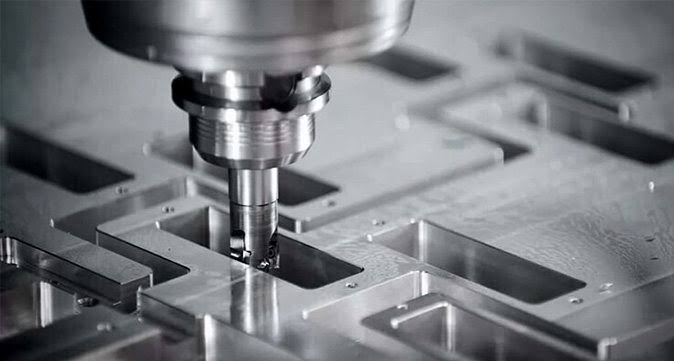Both CNC machining and sheet metal fabrication are popular metal fabrication methods. They have their unique advantages, but which one should you choose when production volume and lead time are your concern?
CNC machining excels in precision and is ideal for low-volume or prototype production, but it typically has longer lead times. On the other hand, sheet metal fabrication is faster for high-volume runs and simpler parts, making it a more efficient choice for large-scale production.
Read on to learn in detail about the lead time in CNC machining vs sheet metal fabrication and the factors that determine the timing. We’ll discuss both options and help you make an informed choice based on your specific requirements.
Volume and Lead Time Considerations
Sheet metal fabrication often outperforms CNC machining for high-volume production. It’s because the fabrication processes can be automated, allowing for faster production speeds.
Think of an assembly line where machines stamp, cut, and weld parts in quick succession; this makes metal fabrication ideal for mass-producing simple parts, like those used in the automotive industry. When you need hundreds or even thousands of identical pieces, it can deliver speed and efficiency, which is hard to match with CNC.
On the flip side, CNC machining is a better option for smaller runs or custom parts. While CNC machines offer precision and versatility, they can only produce one part at a time. This is ideal for CNC prototyping or small batches where accuracy is paramount. However, because machining is a more labor-intensive process, it can be slower and more expensive, especially when parts are complex.
The main considerations for lead time of these processes are:
- CNC Machining: Best for low to medium-volume production, especially for prototypes and custom parts. It has a shorter lead time for small or custom orders.
- Sheet Metal Fabrication: Excels in high-volume production, particularly for parts with simpler designs. It can take longer to set up but is faster for larger production runs
In the next sections, we’ll compare the lead time in CNC machining vs sheet metal fabrication.
Lead Time in CNC Machining
CNC machining lead time refers to the total time it takes to complete an order, from placing the order to deliver the product.
Several factors contribute to how long the lead time will be. Understanding them is important to ensure that projects are completed on time and meet expectations.
1. Prototyping and Batch Production
Prototyping typically involves producing a single part or a small batch to test the design before committing to large-scale production. You can complete the process quickly, usually in about 1 to 7 days.
CNC machining is excellent for rapid prototyping because it can easily produce precise, customized parts directly from CAD files. Engineers can test, adjust, and iterate on the design much faster than using traditional methods, speeding up product development.
The lead time increases for larger production runs. Setting up the machines for mass production, which involves configuring tooling and programming for repeatable operations, takes longer. Once this setup is done, a CNC machine can produce high volumes of identical parts efficiently.
However, the overall time required for larger batches depends on the part complexity and the machine’s capacity to handle the workload.
2. Complex Parts
Complex parts naturally require more time to machine. Intricate geometries, tight tolerances, and specialized features add layers of complexity to the manufacturing process.
For example, a simple part may take just a day or two to produce, but a highly detailed aerospace component might take 7-10 days or more. This is because operators may need to use more sophisticated machining techniques and additional steps, such as finer tool paths or multiple tool changes, to achieve the necessary precision.
Complex parts also often demand more setup time. This can include fine-tuning machine settings, adjusting tools, and running test parts to ensure everything works correctly. Also, these parts usually undergo rigorous quality control, which can further extend lead times.
3. Material Selection and Availability
The materials chosen for a part can affect the CNC machining lead time. Common metals, such as aluminum or stainless steel, are widely available and relatively easy to machine, which typically leads to shorter production times.
However, specialized materials, such as titanium alloys or custom plastics, may require longer lead times for both sourcing and machining. If the manufacturer doesn’t have the particular material in stock, they have to order it, which can delay the entire project.
Even if the material is available, some materials can be trickier to machine, requiring slower machining speeds or specialized tooling. These factors can increase both production and setup time, extending the lead time further.
4. Machining Process and Equipment Availability
The choice of machining process can also impact the lead time. CNC machines come in different types and capabilities, such as 3-axis or 5-axis types. More advanced models, like a 5-axis CNC, can handle complex parts more efficiently, reducing machining time by as much as 40%.
Another factor is machine setup time, which involves installing the proper tools, programming the machine, and conducting test runs. If a job requires many different tools or a custom setup, the time needed to prepare the machine increases.
5. Quality Control and Inspection
After machining, the CNC machined parts typically undergo quality control to ensure they meet specifications. The complexity and application of the part determine how thorough the inspection process will be.
For a simple batch of automotive parts, this might take just a couple of days. But for highly complex or critical components, such as aerospace parts, inspections can take much longer, sometimes 3-5 days, due to the need for detailed checks. Specialized equipment like Coordinate Measuring Machines (CMM) or laser scanners might be used to measure parts with great accuracy.
And the more stringent the quality control requirements, the more time will be added to the lead time.
6. Shipping and Delivery
Shipping is the final step in the CNC machining process, and it can affect the overall lead time significantly. Domestic shipping usually takes 1 to 5 days, while international shipping can extend lead times to anywhere between a couple of days to 4 weeks.
The time required will depend on factors like the shipping method chosen, customs clearance, and the distance between the manufacturing facility and the destination.
Lead Time in Sheet Metal Fabrication
There are differences in the lead time in CNC machining vs sheet metal fabrication. Let’s discuss the factors that impact the lead time:
1. High-Volume Production
High-volume orders often require more time, as the production capacity of a facility might be insufficient to meet the demand. A well-planned production schedule is necessary to produce large batches within a short time.
Larger orders require significant resources, and mismanagement of those resources can cause bottlenecks. Using lean manufacturing practices, such as Value Stream Mapping, can help to identify and eliminate inefficiencies.
2. Simple Parts
Parts with a simple design, featuring less details and features, take less time to produce. A precision sheet metal fabricator can manufacture such parts within a short time.
In contrast, producing parts with intricate designs, tight tolerances, or custom features demands more time. These parts may require additional processing steps, like special tooling or more labor-intensive work. Simplifying the design wherever possible and using standard components can help reduce machining time.
3. Supplier Reliability and Material Availability
Material procurement is another critical factor in sheet metal fabrication lead time. If raw materials are delayed or unavailable, it impacts production schedules. Reliable suppliers who deliver materials on time and meet quality standards can significantly reduce the risk of delays.
4. Inventory Management
When components or raw materials are readily available, production can proceed without unnecessary delays. However, poor inventory management can result in stockouts, forcing manufacturers to wait for materials to arrive before continuing.
Just-in-Time (JIT) inventory management can be especially helpful in streamlining the process. JIT ensures that materials and components are ordered and delivered only as needed for production, minimizing overstocking while ensuring that everything required for manufacturing is available on time.
5. Machine Downtime and Maintenance
Machine downtime is one of the biggest threats to meeting lead time expectations. Unexpected breakdowns or malfunctions can halt production, leading to significant delays.
Regular preventative maintenance is essential to keeping machinery in good working condition and avoiding unscheduled downtime. Also, having backup equipment or contingency plans in place can reduce the impact of machine failures.
Conclusion
Understanding the factors that impact the lead time in CNC machining vs sheet metal fabrication will give you a clear idea about your project timeline. CNC machining excels at precision for smaller runs and prototypes, while sheet metal fabrication is better for large, high-volume orders.
At Zintilon, we specialize in delivering high-quality, precision parts for industries like robotics, automotive, aerospace, and new energy. Whether you need rapid prototypes or large-scale production runs, we ensure meeting your product volume and lead time requirements. Contact us to get a customized solution.
———————————————————–



